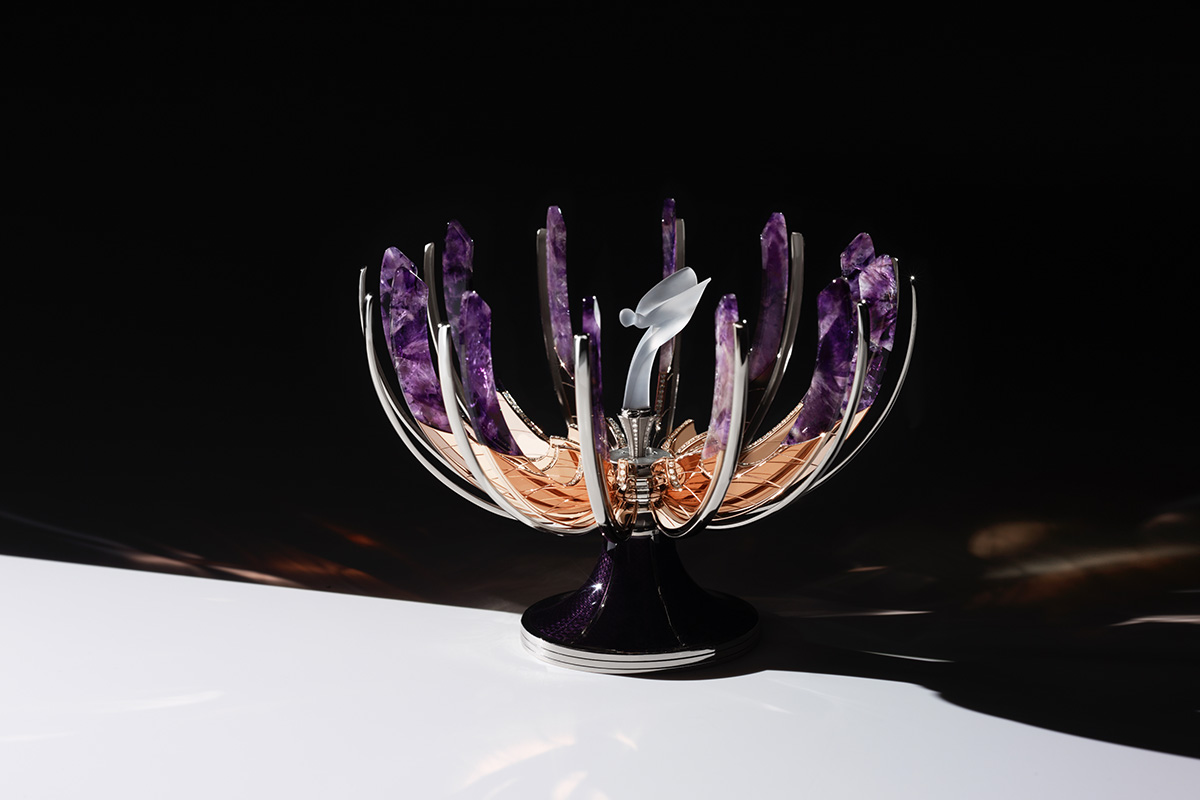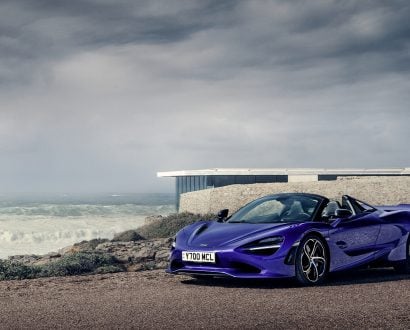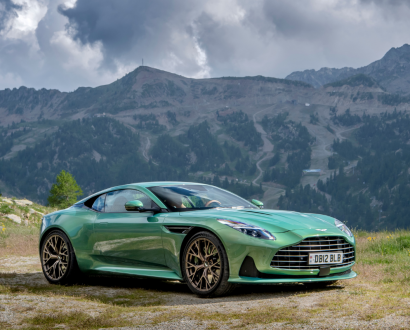One of the world’s most precious ornamental expressions which has attracted the most affluent families for more than a century has been brought back to life with a 21st-century twist for Rolls-Royce.
House of Fabergé was founded in 1842 and later, was commissioned by the Russian royals to craft jewelled ‘Easter eggs’. Now, the company has created another exceptionally rare Imperial Egg – the first to be made since 1917.
Standing 160mm tall at just 400g, and boasting nearly 10 carats of round white diamonds and 390 carats of natural amethyst, the stunning Spirit of Ecstasy Fabergé egg took seven people two years to construct.
“The Spirit of Ecstasy Fabergé egg was born from an intrinsic desire to further the realms of bespoke personalisation,” Rolls-Royce Motor Cars CEO Torsten Müller-Ötvös said. “Responding to the continuing demands of patrons in search of unique and cherished possessions, a designer at the House of Rolls-Royce sketched an egg, igniting a fascination that will undoubtedly become one of the most collectable items of modern time.”
The iconic Rolls-Royce mascot, which has been synonymous with the brand since 1911, is cocooned in an exquisite and contemporary Fabergé egg designed by Rolls-Royce Designers Stefan Monro and Alex Innes, rendered by Fabergé Lead Designer Liisa Talgren and crafted by Fabergé work-master Paul Jones.
“A designer at the House of Rolls-Royce sketched an egg, igniting a fascination that will undoubtedly become one of the most collectable items of modern time,” – Torsten Müller-Ötvös
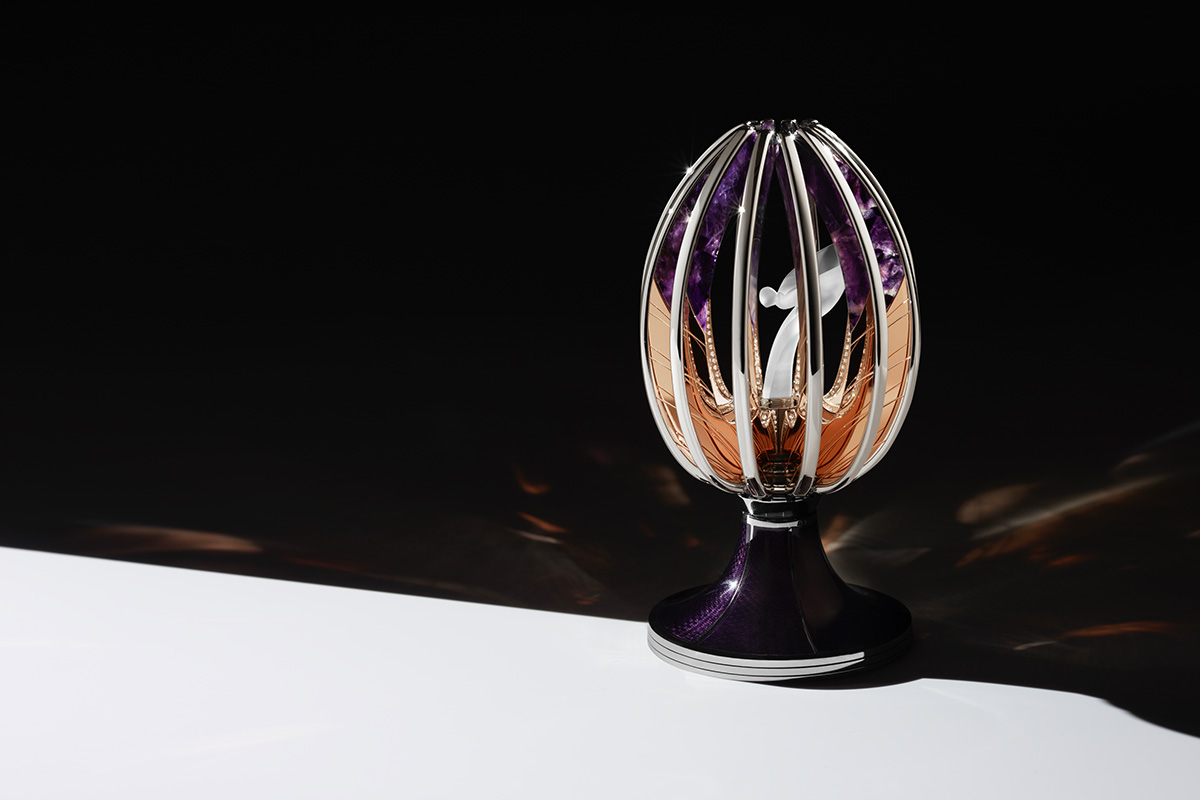
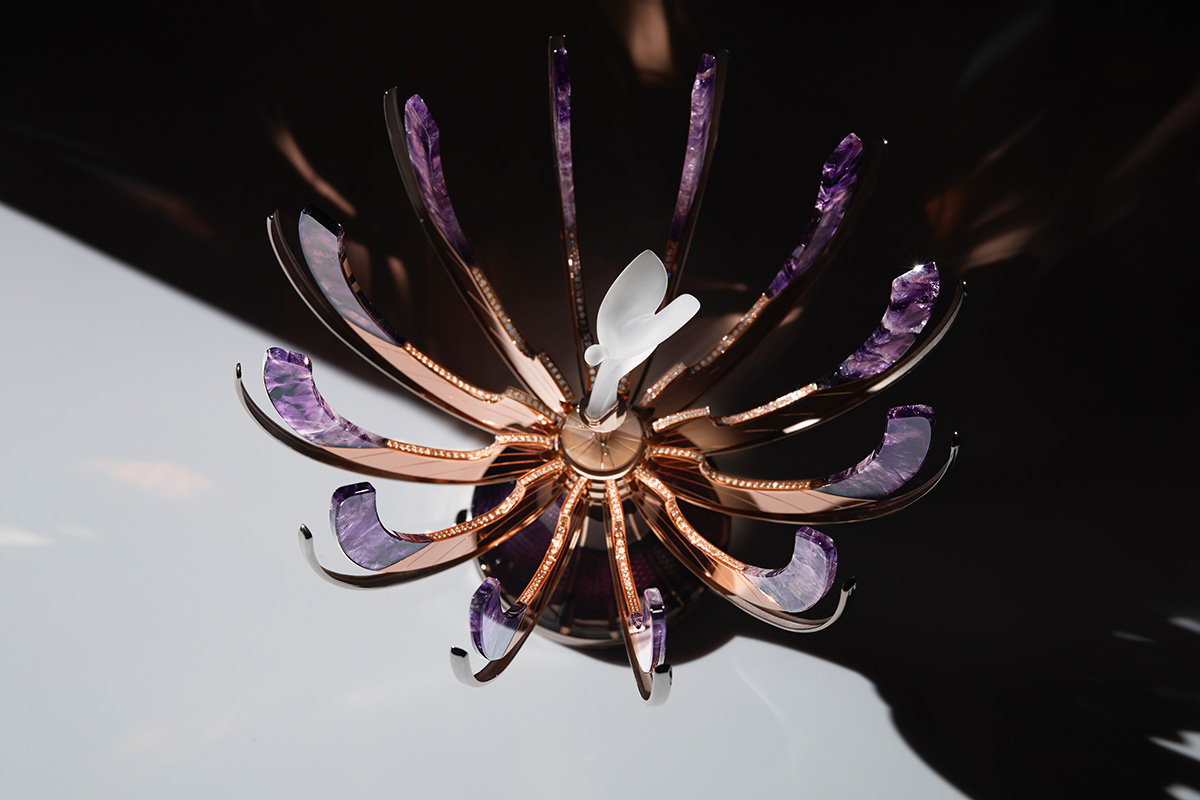
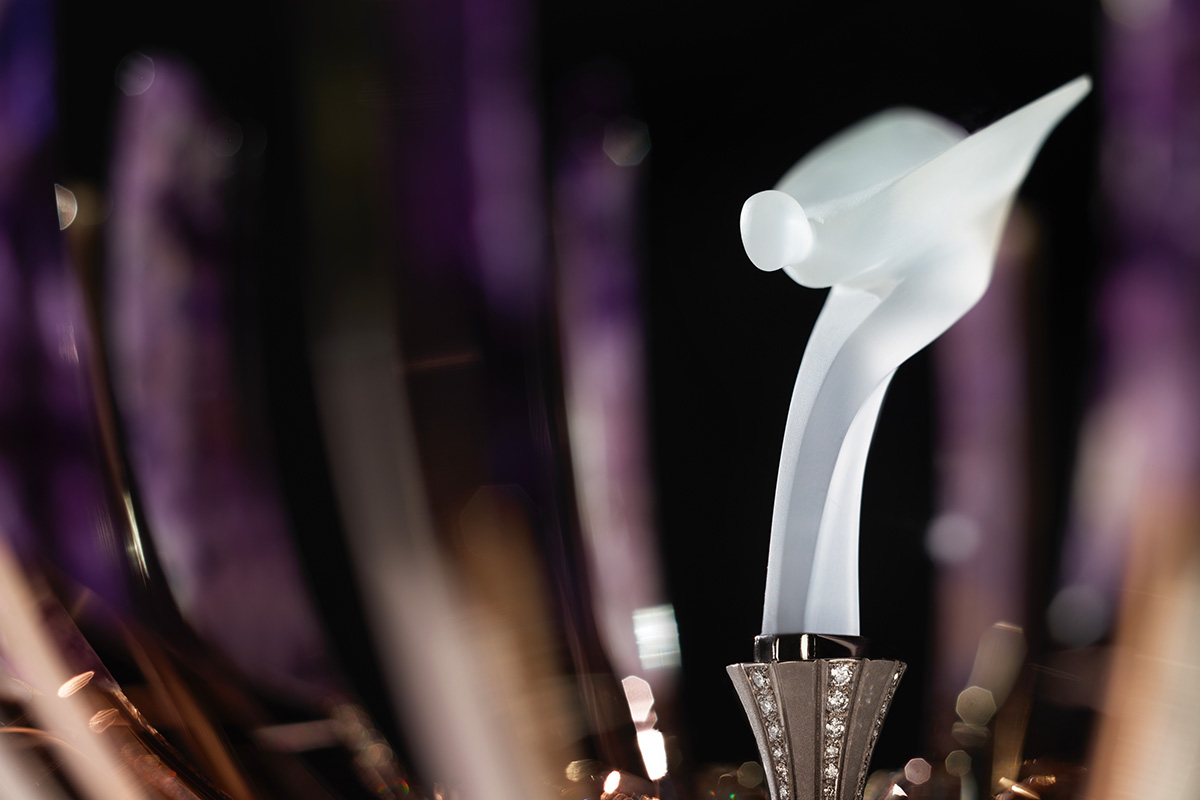
Hailed as being one of the most prized possessions in the modern world, the jewelled egg sits on an engine-turned, hand-engraved purple enamel guilloché base of 18 karat white gold act as a protective chamber. A discreet lever at the base of the stand opens the chamber to theatrically reveal the beauty hidden inside.
The exquisite Fabergé eggs were first created by Peter Carl Fabergé (1846-1920), a Russian goldsmith who was commissioned by the Russian Emperor to craft the first egg as an Easter gift for his wife. Fifty Imperial Eggs were manufactured before 1917, making them extremely treasured and historically significant collector gems.

